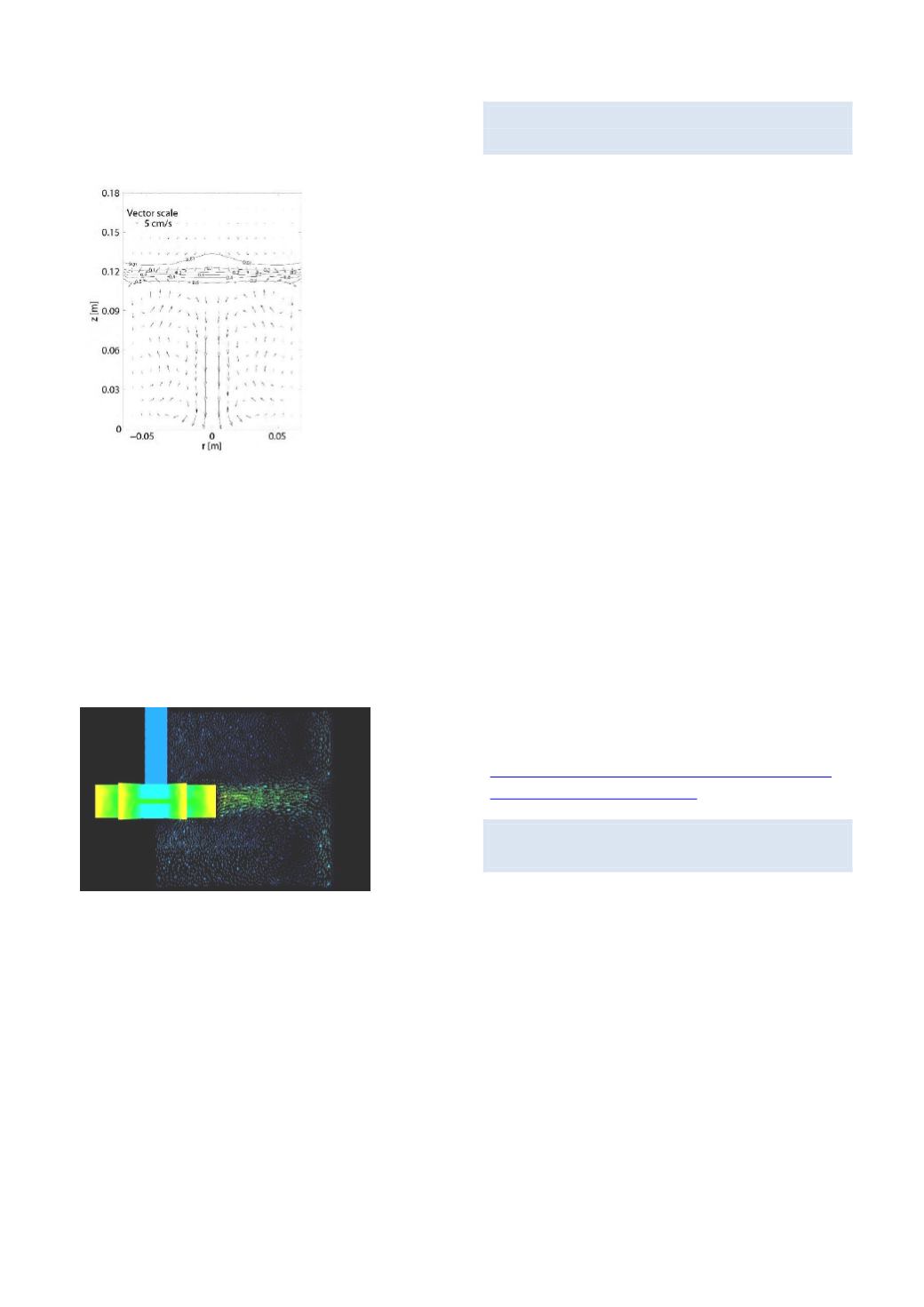

Department of Chemical Engineering
Annual Report 2015
25
The PBEs are solved accurately by efficient spectral and
spectral-element methods designed for this particular
purpose.
Flow pattern in a bubbling fluidized bed.
We are also investigating the performance of chemical
reactive systems like fluidized beds, fixed bed reactors
and agitated tanks. At present we are working with the
design of suitable reactors for sorption enhanced
reaction processes (SERP) like steam reforming with
absorbents for CO
2
. Moreover, we are performing
investigations of the chemical looping reforming and
combustion processes.
Simulation of the flow pattern from a turbine impeller.
The conventional 1D and 2D steady-state reactor models
are normally run on standard PCs whereas the more
computationally demanding dynamic 2D and 3D single
and multiphase flow simulations are run on the national
super-computers located at the university.
ADVANCED MODELING AND SIMULATION OF
CHEMICAL- AND BIOCHEMICAL REACTORS
The activity in this area is mainly founded by the
Norwegian Research Council through the GassMaks
program. The work in this project is focused on modeling
of chemical reactors like fixed packed bed-, bubble
column-, and fluidized bed reactors by the complete
multifluid model containing a population balance
equation for the fluid particle size distribution for the
multiphase reactors. The model equations are solved by
the modern least squares spectral element method. In
the next phase of the project the novel in-house codes
will be applied analyzing the chemical reactor processes
utilizing natural gas as feedstock.
One such activity is related to the modeling,
implementation and simulation of the Fischer-Tropsch
process operated in a slurry bubble column producing
diesel using natural gas and biomass as feedstock. For
this purpose, we are employing a combined multifluid-
population balance model for the reactive three-phase
system. The model equations are solved by the modern
least squares spectral method.
A new activity in the
group is related to the utilization of biochemical
processes that are mass transfer limited thus the bubble
size distribution is of outmost importance. Hence,
combined multifluid-population balance model is
applied for these processes as well. Further information
on this activity is outlined at:
http://www.ntnu.edu/web/ntnu-biotechnology/ntnu- bioreactor-design-and-operation .EXPERIMENTS ON FLUID PARTICLE BREAKAGE
(SUBPRO)
For the reactor group the main activity in this SFI
program is the experimental investigating of fluid
particle (i.e., bubbles and droplet) breakage (and
coalescence). A novel experimental facility is under
construction for high speed imaging of single particle
breakage events, Fig. x. The goal is to determine
parameters like the mother particle size, the number of
daughters produced in a single breakage event, the
breakage time, breakage probability, the size distribution
of the daughter particles. These are important functions
in a population balance closure model for describing the
breakage phenomena.


















